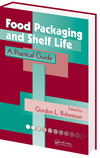Q&A: Mergers & Acquisitions
Clairvest Group’s Doug Horn answers questions about the M&A landscape

When is the right time to consider a merger or acquisition? We caught up with Doug Horn, who leads the packaging investment practice at the Clairvest Group, to ask him about that and to get his thoughts about the market in general. Why Clairvest? It was founded in 1987 by a group of successful entrepreneurs and is a top performing private equity firm with approximately $2 billion of capital under management. Clairvest’s mission is to partner with entrepreneurs to help them build strategically significant businesses.
There seems to be a lot of merger and acquisition (M&A) happening in packaging recently. Is this a real thing or a product of media perception? If real, what has been driving this activity?
Horn: It’s real. In 2020, there were an estimated 289 acquisitions of packaging companies globally — more than one each working day of the year! It is one of the most active sectors globally for transaction volume. The relative fragmentation of the industry lends itself to persistent M&A activity as well-funded companies pursue growth via acquisition and smaller competitors look for exit opportunities.
Not surprisingly we saw a pullback in the M&A markets in Q2 and Q3 2020 but as uncertainty lifted, the size and quantum of transactions increased. Several end markets — food and beverage, household, personal care, health care and e-commerce — had some of their best financial performance on record as consumption patterns shifted. Q4 showed an incredible rebound which bodes well for 2021 activity.

Graph data courtesy of Mazzone & Associates
What effect is this having on the business landscape?
Horn: The effect is threefold. First, the industry structure is shifting (and it has been for some time) where new medium- and large-size competitors are being created through mergers and acquisitions. Secondly, best-in-class companies are now capitalized with even more resources (people and money) to focus on customer experience and innovation. And last, we are seeing a more diversified supply chain — companies with more manufacturing operations spread across more locations as well as companies with more complementary product lines to sell more to the same customers.
How can M&A benefit a mid-size company in the packaging industry?
Horn: Entrepreneurial organizations offer more personalized and relevant customer service with committed local market knowledge. But these differentiators still require continuous investment — in equipment, automation, product R&D and, importantly, people. M&A should be part of this growth strategy. Acquisitions provide several benefits, including: accelerating expansion plans into new geographic markets or product SKUs, increasing profit margins through scale, and protecting market share to help neutralize competitive threats. There is no reason why mid-size companies should cede these opportunities to the large strategics or the private equity-controlled companies in the industry. In our conversations with entrepreneurs over the last year, we have been encouraged by the number of agile, owner-operators looking to source the right financing partner and putting plans in place to pursue their own acquisition programs.

Graph data courtesy of Mazzone & Associates
How would a company know when the time is right to pursue or commit to an M&A?
Horn: M&A is one of several tools that form part of a company’s overall growth strategy. As firms map out their long-term plans, some goals can be addressed internally while others might be more suitable for acquisitions. Often M&A is the quickest and least risky way to expand geographic/customer reach and bring on new products. In our discussions with CEOs, it is evident that best-in-class packaging management teams see M&A as core to their strategic priorities in conjunction with significant internal capital projects. They plan for both. CEOs are aligning their teams around these efforts; building a funnel of proprietary leads, pre-securing equity and/or debt financing, hiring the right talent to pursue this strategy and planning for integration
Are there any benefits to consumers?
Horn: The sector is undergoing an evolution around the importance of sustainability and potential extended producer responsibility (EPR) regulations, innovation in print and substrate technologies, and the move toward shorter production runs and more customization. All of these trends require a forward-leaning supply chain and, by association, investments on the part of packaging suppliers. As companies grow larger, they have more capital to reinvest in their businesses and they increase the operating sophistication of their acquired entities. These investments benefit consumers by providing more selection at better value, enhancing geographic coverage, and creating greater innovation around the finished product and procurement process.
Looking for a reprint of this article?
From high-res PDFs to custom plaques, order your copy today!









